Turf time: Which stadiums have the best and worst fields in the NFL?

Natural grass versus artificial turf. Cold-weather grass versus warm-weather varieties. There’s plenty to debate within the NFL's various playing surfaces, and there are also plenty of complaints to go around. In this ranking of the NFL playing surfaces, we acknowledge the debates. We acknowledge the differences. And we recognize the intricacies involved in preparing NFL fields every week.
“The bottom line is they all meet the NFL’s certification program every week,” Andy McNitt, Penn State University’s director of its Center for Sports Surface Research and the man in charge of testing NFL fields, tells SI.com. “All of our fields today versus 10 years ago are way better. The fields are in much better shape across the board.”
Snake's Take: How Kaepernick can improve on a disappointing Week 3
McNitt, who holds a Ph.D. in soil science from Penn State and is a member of the Sports Turf Managers Association, oversees the hardness testing every week. That process includes using a Clegg Gmax 2.25-kilogram hammer to drop weight from a given height to measure how quickly the weight stops on impact. Using the instrument, NFL fields must fall under a 100 score everywhere on the field. If one doesn't, remediation must happen before a game can be played. Most fields range in the 80s, with the occasional test in the 70s or 90s. Natural-grass fields can soften into the 60s following rain.
The fields, though, aren’t just tested for hardness. The NFL checks seams and infill depth, and even runs a magnet across the field to make sure there’s no loose metal, such as a bolt from a concert stage.
• KAPLAN: Why Kaepernick's job is safe | BRANDT: Brady is underpaid
Week 4 NFL Power Rankings: Cards show they're elite, move into top three
We aren't the first people to rank the fields in the NFL. Every season, the NFLPA polls players about the surfaces on which they play. But McNitt brings up a valid point about past player rankings, noting that players don’t play on every field every year, and they play on fields in vastly different conditions. And some players rank on aesthetics or location, not so much the field itself. That’s why SI went deeper, using past player rankings, insight from current players and details from groundskeepers to better understand the fields and formulate our rankings.
While players uniformly prefer natural grass over artificial turf, the warm-weather variety of Bermuda grass has a higher durability and quicker recovery time than a cool-weather variety such as Kentucky bluegrass, helping Bermuda perform better over the course of an entire season. And natural grass is wonderful until owners don’t spend the money to keep it pristine—it will cost about $100,000 to $125,000 for a full re-sod of a field, often needed in cold-weather environments.
Let’s start the rankings:
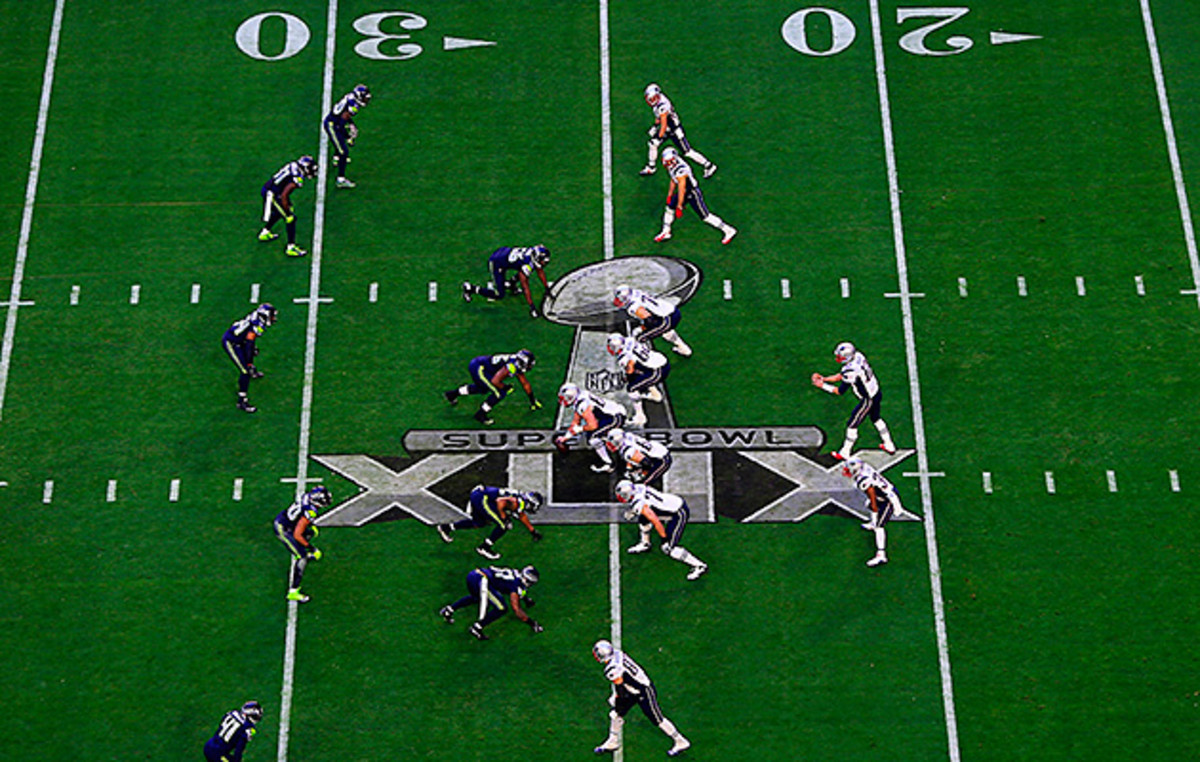
1. Arizona Cardinals: University of Phoenix Stadium, Glendale, Ariz.
You’ll hear very little argument about who holds the top spot for the best field in the NFL. Sure, Arizona has plenty of sunshine and can grow a healthy amount of Tifway 419 Bermuda grass, but more importantly, the Cardinals have the pleasure of rolling the field outside the stadium. The entire playing surface is retractable, in one giant tray, allowing the turf to grow and get maintained outside the stadium, coming inside only for NFL football games. And with a groundskeeping staff doing a stellar job with the turf, Arizona earns the top spot.
2. Tampa Bay Buccaneers: Raymond James Stadium, Tampa, Fla.
There are not many NFL fields on the east side of the country that are nicer than the Tifway 419 Bermuda grass that covers Raymond James Stadium in Tampa. Well, unless you’re Aaron Rodgers. The turf in Tampa has proven popular for years, but late last season Rodgers complained about the softness of the sod. His complaints aside, Tampa's field still deserves one of the top spots on this list.
3. Miami Dolphins: Sun Life Stadium, Miami Gardens, Fla.
Finally the pristine Tifway 419 Bermuda grass in Miami has a sparkling new seating bowl to go with it. Long considered one of the top fields in the NFL, the Miami climate allows the Bermuda warm-weather grass to flourish with plenty of sunshine and a long growing season needed for quick recovery.
4. San Diego Chargers: Qualcomm Stadium, San Diego, Calif.
Let’s revisit the formula that makes for some high-quality growing: southern sunshine. That sun bathes the Bandera Bermuda grass in this unloved stadium, helping to keep the Qualcomm Stadium turf in pristine condition, even if the rest of the stadium is likely nearing the end of its days.
5. Carolina Panthers: Bank of America Stadium, Charlotte, N.C.
Long live the Bermuda. The use of Voyager Bermuda grass—the only field using the Voyager style of Bermuda—in Charlotte helps keep the Panthers’ field strong all season. The ability of Bermuda to stand up to heavy use and with quick recovery plays well in Charlotte.
6. Jacksonville Jaguars: EverBank Field, Jacksonville, Fla.
Florida fields rank high when it comes to this list, thanks to the ample sunshine keeping the Bermuda grass plenty healthy. EverBank Field is able to keep its Tifway 419 Bermuda natural grass on solid footing all season long.
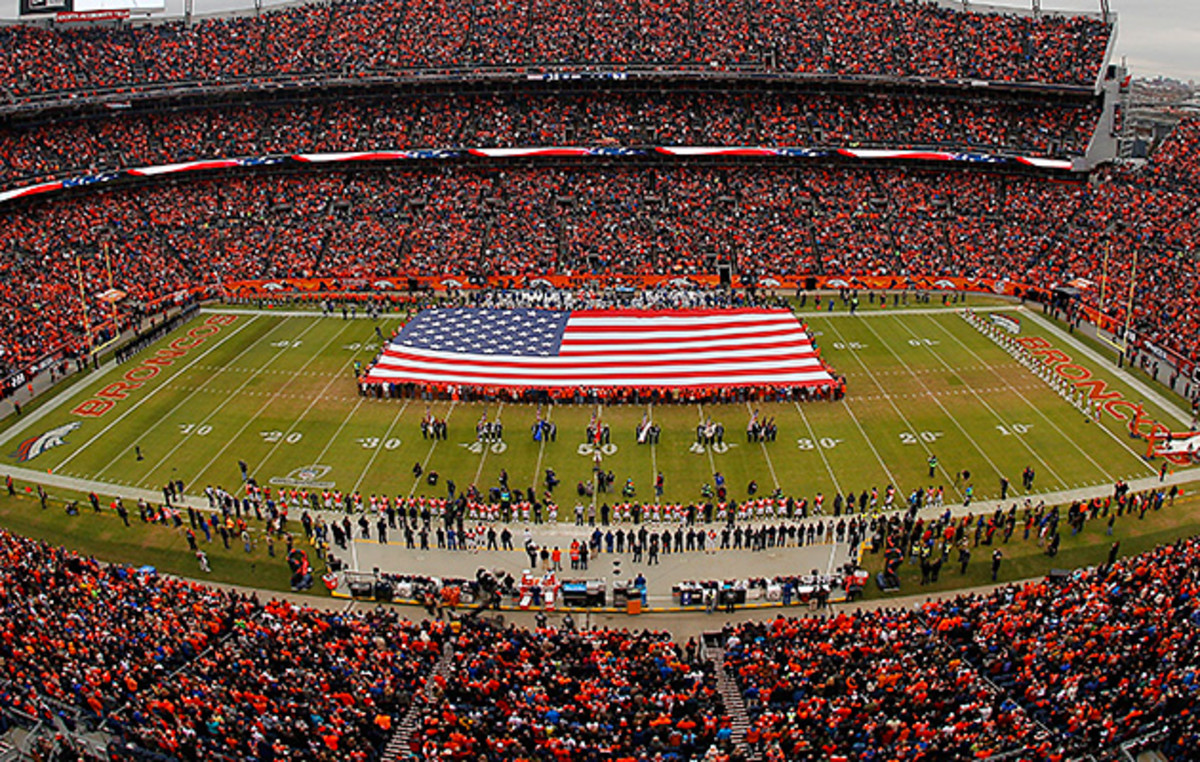
7. Denver Broncos: Sports Authority Field at Mile High, Denver, Colo.
Easily the best cool-season natural grass in the league, the Broncos have made everything even better for the 2015 season. A complete overhaul of the field prior to this season saw a brand new underfield heating system, under-soil base and a change back to a 100% Kentucky Bluegrass sod from the Grassmaster system. The Broncos take good care of their turf, which is the envy of every cold-weather field (and even put some warm-weather fields to shame). The updates might be good news for Doug Baldwin, who complained about the 'terrible' field after a game there in 2014.
• KING: Mailbag: How Elway built the Broncos' D | Week 4 fantasy rankings
8. Kansas City Chiefs: Arrowhead Stadium, Kansas City, Mo.
The Chiefs have had their Latitude 36 Bermuda grass growing ever since replacing the old-school Astroturf in 1994. It can be a tricky endeavor to keep the Bermuda going strong in the winter, but Kansas City has successfully balanced cold weather and warm-weather grass while staying all natural for the last 20-plus years.
9. Green Bay Packers: Lambeau Field, Green Bay, Wis.
Now the only stadium in the league to use the Desso GrassMaster system (which Denver gave up in their field renovation this year) that weaves artificial turf into a predominantly natural-grass surface, this hybrid has proven to work in Green Bay, giving the cold-weather climate an added boost and strength during the winter. The Packers are also the first team to install a heating system under the field (it's been upgraded since the original installment), which keeps the field from ever really turning into the Frozen Tundra.
10. Tennessee Titans: Nissan Stadium, Nashville, Tenn.
If Ravens want to dig out of 0–3 hole, Flacco needs to start delivering late
The TifSport Bermuda grass in Nashville offers up a steady carpet of warm-weather grass for the Titans, but it can certainly start to struggle in the winter. Heavy use on the grass field can take its toll by the end of the season, especially with Nissan Stadium lacking a heating system under the field.
11. Cleveland Browns: FirstEnergy Stadium, Cleveland, Ohio
As far as cool-season fields go, FirstEnergy Stadium has one of the better swaths of Kentucky Bluegrass in the league right now. Cleveland has always played its home games on natural grass and while cool-weather stadiums generally waffle between artificial and natural, the Browns have stayed true to natural grass, even if some foul weather and overuse has made for tough patches in the past.
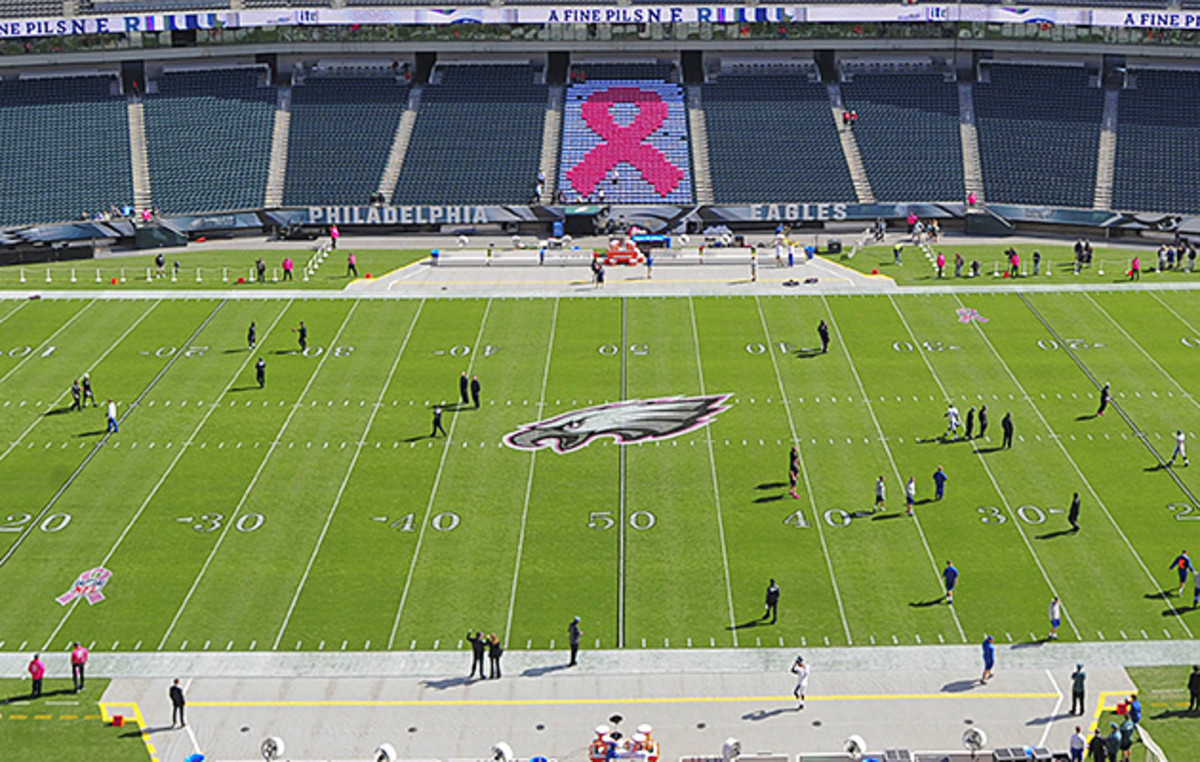
12. Philadelphia Eagles: Lincoln Financial Field, Philadelphia, Penn.
The Eagles want the best of both worlds with their natural grass. The season starts with warm-weather Bermuda and sometime before the fall ends the Eagles make a switch suitable for the north, installing cold-weather Kentucky bluegrass boosted by the under-field heating system. Philadelphia's dedication and effort to putting forth a quality grass field is clear, even with a hefty lineup of events coming through the Linc.
13. Indianapolis Colts: Lucas Oil Stadium, Indianapolis, Ind.
The FieldTurf Classic HD in Indianapolis does a great job of feeling like natural grass. With a new fiber designed for softness and durability designed to also hold in the rubber infill for less “splash,” the Colts play on a popular artificial surface.
14. New York Jets/New York Giants: MetLife Stadium, East Rutherford, N.J.
Should Rams' Barron have been penalized for hit on Roethlisberger?
To help pay for this $1 billion-plus stadium, MetLife Stadium needs to host as many events as possible, and with the cold weather in New Jersey, going artificial was a must for that to work. Using the UBU Speed Series S5-M Synthetic Turf, two teams successfully use this field without any major playing issues.
15. Seattle Seahawks: Century Link Field, Seattle, Wash.
The first NFL stadium to install FieldTurf, Century Link now has the brand’s Revolution product, the same turf the Patriots have installed in Massachusetts. The Revolution puts a focus on durability and longevity. Aesthetically the Seahawks struggle when the Sounders’ season overlaps, but the aesthetics don’t matter when it comes to footing, which remains solid in Seattle.
• BENOIT: Seahawks still aren't maximizing the true value of Graham
16. San Francisco 49ers: Levi’s Stadium, Santa Clara, Calif.
The first season in Levi’s Stadium was a turf disaster. While the ever-shifting sod didn’t mar games, the team was unable to practice on the surface and spent time and money trying to resod the venue to ensure games could go on. This past offseason, the 49ers rebuilt the baselayer under the sod, but still had plenty of trouble in the preseason—as we saw by complaints from Jerry Jones, among others—largely blamed on overuse. The 49ers have installed more sod in one year than most teams do in a half-dozen years, but the latest version of Bermuda grass has taken to the new drainage system and baselayer and appears to provide the 49ers solid footing for this season. The current state of the field moves Levi’s Stadium up on the list and provides a bit of hope it can successfully host Super Bowl 50 in February.
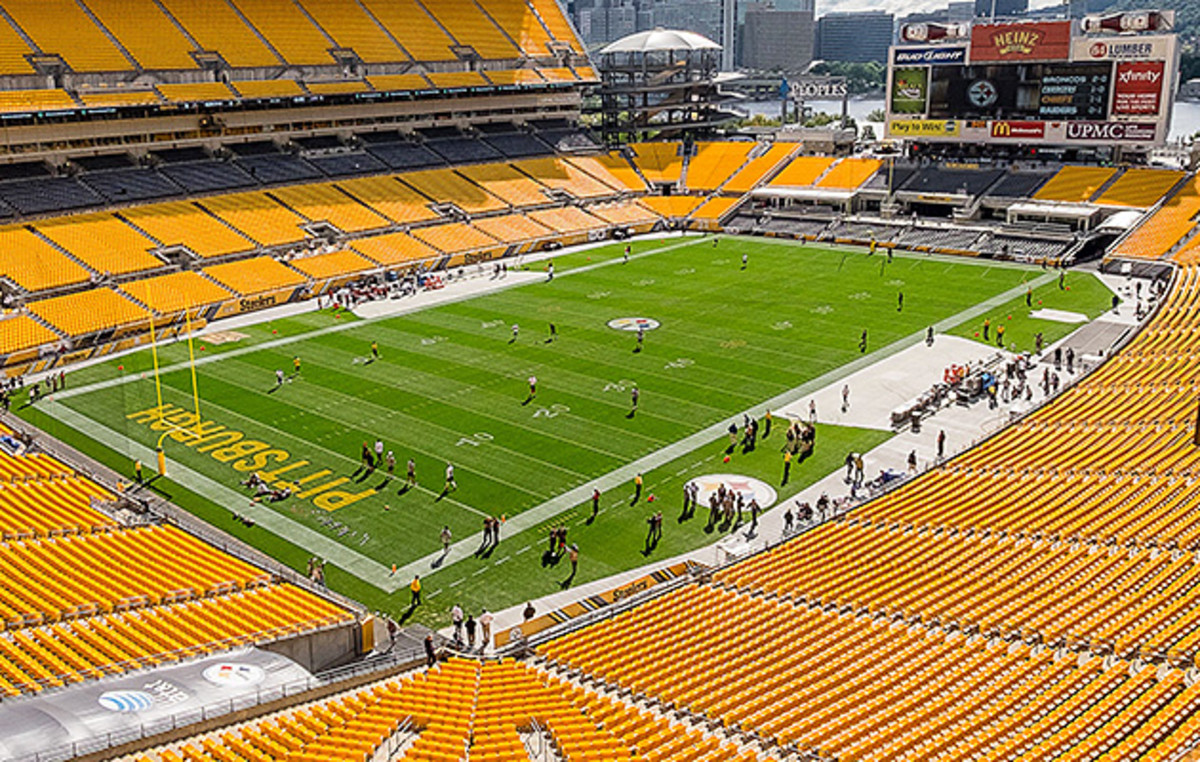
17. Pittsburgh Steelers: Heinz Field, Pittsburgh, Penn.
Many folks following field conditions may be surprised that Pittsburgh doesn’t drop farther down this list. But the past woes of Pittsburgh near-dirt and waterlogged fields have changed with a renewed focus on natural grass. Using the Grassmaster system meant that Pittsburgh wasn’t able to replace sod midway through a season, leading to tough conditions late in seasons. Resodding is often a must in cool-weather climates. But since going to an all-natural Kentucky bluegrass, the Steelers can replace the field multiple times, improving their turf conditions throughout the season.
18. New England Patriots: Gilette Stadium, Foxborough, Mass.
Fantasy football Week 4: 10 most intriguing players to watch
In 2006, the Patriots grew so frustrated with keeping the natural grass growing that they became the first NFL team to switch from grass to artificial turf in-season. In 2014, the Patriots upgraded their FieldTurf to the latest variety—Revolution—that gave the field a better in-fill system, drainage and cushioning.
19. Detroit Lions: Ford Field, Detroit, Mich.
Ford Field has gone with FieldTurf since opening in 2002 and upgraded to the newer Classic HD version in '13, improving the softness and durability of the field at that time.
20. Dallas Cowboys: AT&T Stadium, Arlington, Texas
Games, concerts and events run through this mega-money, mega-building on a routine basis, and using a Matrix RealGrass artificial surface has kept this field hosting aplenty. The only stadium in the league to use the Matrix brand of turf, this Alabama-made system uses a rubber infill system common in modern artificial surfaces.
21. New Orleans Saints: Mercedes-Benz Superdome, New Orleans, La.
The second most popular artificial turf makes an appearance in New Oreleans. The UBU Speed Series S5-M Synthetic Turf has a heightened artificial fiber with a 70 percent rubber/30 percent sand infill system aimed at staying even across the playing surface.
22. Cincinnati Bengals: Paul Brown Stadium, Cincinnati, Ohio
There may be no other stadium in the league with such a varied field past than Paul Brown Stadium. The grass that was in place from the stadium’s opening until 2003 was replaced by FieldTurf and then, in '12, switched to UBU Speed Series S5-M Synthetic Turf.
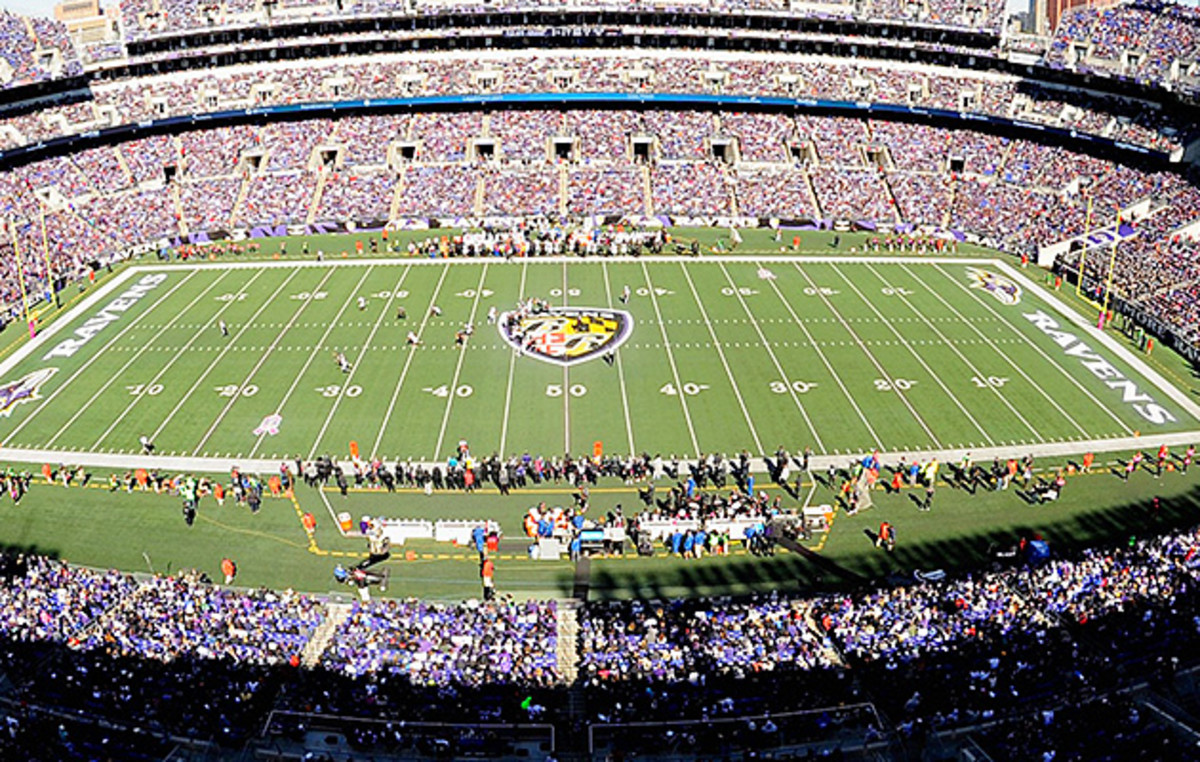
23. Baltimore Ravens: M&T Bank Stadium, Baltimore, Md.
The only NFL stadium using Shaw Sports Momentum 51 artificial surface, the design of the fibers are said to help hold in the infill system. Baltimore had a natural-grass surface over a decade ago, but struggled to keep the field in good shape throughout the winter, forcing the move to an artificial surface.
24. Atlanta Falcons: Georgia Dome, Atlanta, Ga.
The FieldTurf Classic HD artificial turf fills the Georgia Dome for the last years of the Falcons playing inside the dome. The rubber-infill system gets heavy use inside a dome, making it difficult to keep the infill evenly distributed across the field.
25. Oakland Raiders: O.co Coliseum, Oakland, Calif.
Ranking the backup quarterbacks called into action this season
You really have to take into account the changing of seasons when ranking fields and O.co Coliseum ranks this high on the list because not all the Raiders’ game are played during baseball season. The only stadium still hosting both MLB and NFL, if this ranking took into account only September, O.co would drop even lower with the mix of grass and dirt making footing sketchy, according to players, but the Tifway II Bermuda gets going strong enough post-baseball to move this field up the list, ever so slightly.
26. Washington: FedEx Field, Landover, Md.
The warm-weather Latitude 36 Bermuda grass has certainly seen its share of issues in the past. The warm-weather turf has turned to nearly all hard dirt during past winters, a process easily navigated through with money allocated for resodding. A wealth of turf farms in the area should mean that Washington has a better natural field, but the fact they don’t is on the ownership. We saw major problems in 2013 for the Redskins and the Seahawks, which were remedied by new turf later that year, but there's still a long way to go for FedEx Field's field.
27. St. Louis Rams: Edward Jones Dome, St. Louis, Mo.
The old AstroTurf certainly offered a completely new way of doing turf in stadiums, but it was a way that was abandoned for its lack of give and subpar cushioning. The Rams were once the only NFL team still using the AstoTurf brand, but not the old stuff, having installed the company’s GameDay Grass 3D system, a rubber infill system similar to the others across the league.
28. Chicago Bears: Soldier Field, Chicago, Ill.
The Kentucky Bluegrass in Chicago doesn’t have the ownership backing it needs to keep the cool-season grass replenished all season long. The lack of commitment can render this field tough for NFL players late in the season, a constant point of contention year after year. Kicker Robbie Gould even complained about his own team's field during a radio interview in 2012, saying it had sunk to new lows.
29. Buffalo Bills: Ralph Wilson Stadium, Orchard Park, N.Y.
The only field using the A-Turf Titan infill artificial system hasn’t gotten a good rap around the league. It is tough to tell if the cold weather in Buffalo has put a difficult spin on the Ralph Wilson Stadium turf or if this style of artificial turf just doesn’t have the same comfort level as the rest of the league.
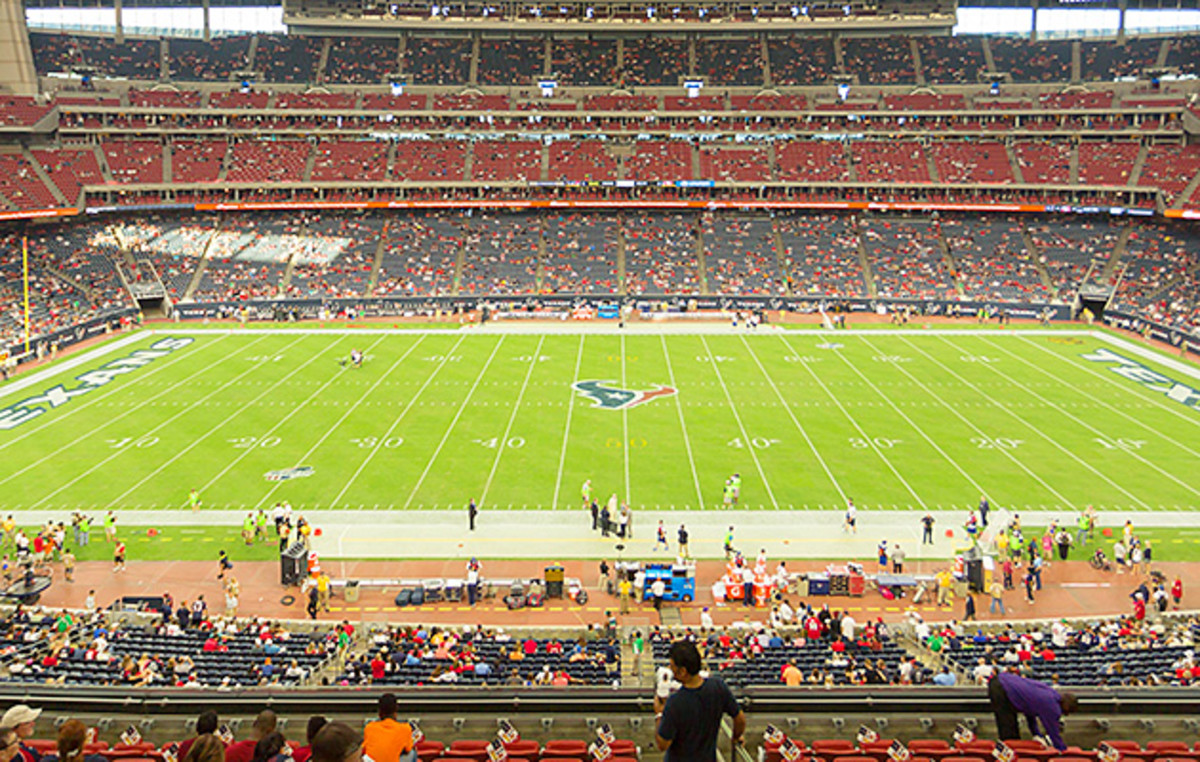
30. Houston Texans: NRG Stadium, Houston, Texas
Houston has two things that should boost this field way up the list: natural grass and warm-weather Bermuda. But where this Tifway 419 Bermuda falters is in its foundation. This heavily used stadium was built with a removable field. All the natural grass—the stadium has three fields—lives in trays outside behind the old Astrodome and gets brought in and assembled for NFL games. That assembly, though, can create seems and uneven footing between the trays, allegedly leading to major injuries for Jadeveon Clowney, Wes Welker and more. The eight-foot by eight-foot tray system has gotten so bad that the Texans announced in September it switched to an artificial system—they also have a movable AstroTurf GameDay Grass 3D system—for the rest of the regular season and will then revisit the turf issue at the end of the season. But even a tray system of artificial turf doesn’t solve all the problems in Houston.
NR: Minnesota Vikings: U.S. Bank Stadium, Minneapolis, Minn.
This new fully indoor stadium won’t open in the NFL until next year. When it does, it will offer an infill artificial field.
Tim Newcomb covers stadiums, sneakers and design for Sports Illustrated. Follow him on Twitter at @tdnewcomb.
